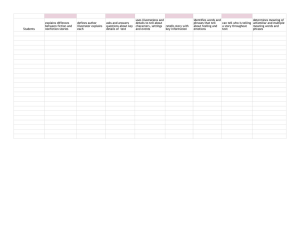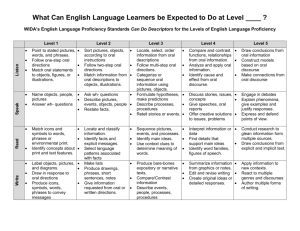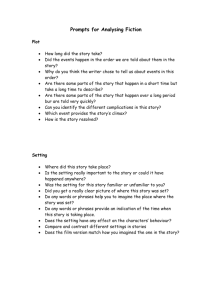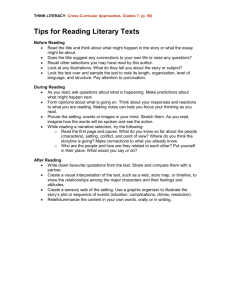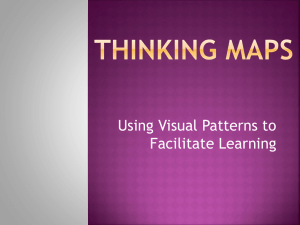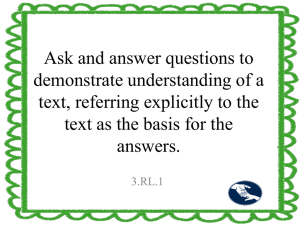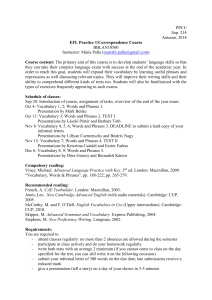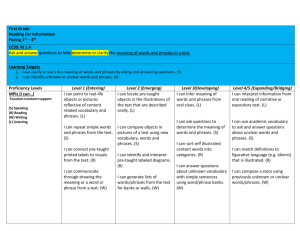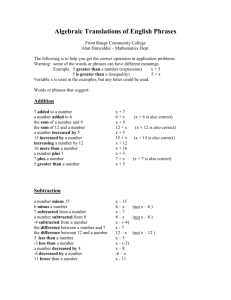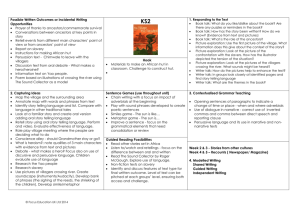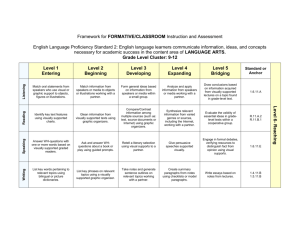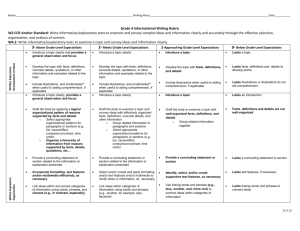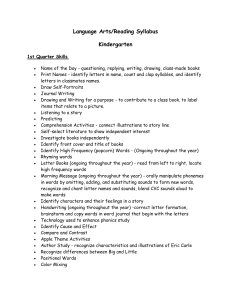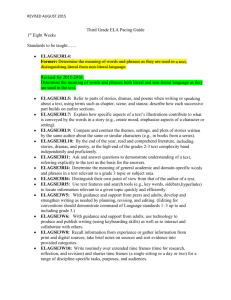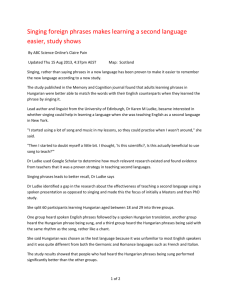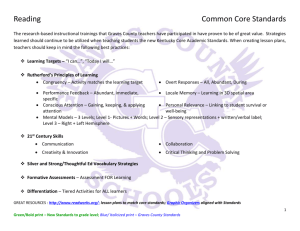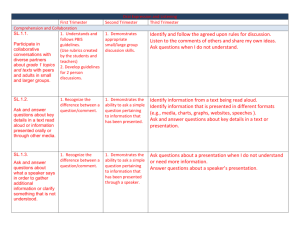K-2LiteratureQuestionStems
advertisement
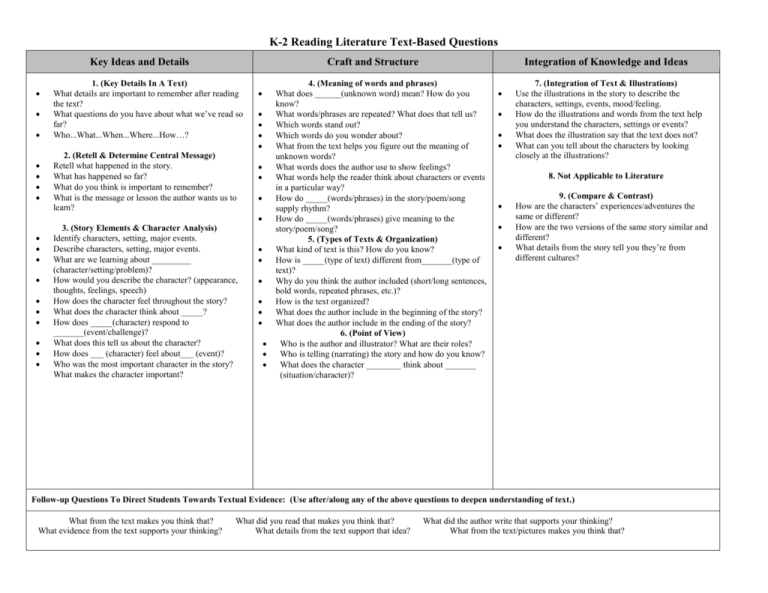
K-2 Reading Literature Text-Based Questions Key Ideas and Details Craft and Structure 1. (Key Details In A Text) What details are important to remember after reading the text? What questions do you have about what we’ve read so far? Who...What...When...Where...How…? 2. (Retell & Determine Central Message) Retell what happened in the story. What has happened so far? What do you think is important to remember? What is the message or lesson the author wants us to learn? 3. (Story Elements & Character Analysis) Identify characters, setting, major events. Describe characters, setting, major events. What are we learning about _________ (character/setting/problem)? How would you describe the character? (appearance, thoughts, feelings, speech) How does the character feel throughout the story? What does the character think about _____? How does _____(character) respond to _______(event/challenge)? What does this tell us about the character? How does ___ (character) feel about___ (event)? Who was the most important character in the story? What makes the character important? Integration of Knowledge and Ideas 4. (Meaning of words and phrases) What does ______(unknown word) mean? How do you know? What words/phrases are repeated? What does that tell us? Which words stand out? Which words do you wonder about? What from the text helps you figure out the meaning of unknown words? What words does the author use to show feelings? What words help the reader think about characters or events in a particular way? How do _____(words/phrases) in the story/poem/song supply rhythm? How do _____(words/phrases) give meaning to the story/poem/song? 5. (Types of Texts & Organization) What kind of text is this? How do you know? How is _____(type of text) different from_______(type of text)? Why do you think the author included (short/long sentences, bold words, repeated phrases, etc.)? How is the text organized? What does the author include in the beginning of the story? What does the author include in the ending of the story? 6. (Point of View) Who is the author and illustrator? What are their roles? Who is telling (narrating) the story and how do you know? What does the character ________ think about _______ (situation/character)? 7. (Integration of Text & Illustrations) Use the illustrations in the story to describe the characters, settings, events, mood/feeling. How do the illustrations and words from the text help you understand the characters, settings or events? What does the illustration say that the text does not? What can you tell about the characters by looking closely at the illustrations? 8. Not Applicable to Literature 9. (Compare & Contrast) How are the characters’ experiences/adventures the same or different? How are the two versions of the same story similar and different? What details from the story tell you they’re from different cultures? Follow-up Questions To Direct Students Towards Textual Evidence: (Use after/along any of the above questions to deepen understanding of text.) What from the text makes you think that? What evidence from the text supports your thinking? What did you read that makes you think that? What details from the text support that idea? What did the author write that supports your thinking? What from the text/pictures makes you think that? K-2 Reading Literature Text-Based Questions Enduring Question Purpose: • • This is a question students consistently think about and discuss throughout each pivotal passage to help them uncover the theme. This is the last question asked after each pivotal passage to build up to the culminating question. Examples: (Choose one or write your own) • • • • • What does the author want us to understand? How is the character changing? What are we learning about ______ ? What is the story really about? What are we learning about the character? Culminating Question Purpose: This question will be asked to engage the class in an extended discussion about the theme. Students will also answer this question in writing. (constructed response) Examples: (Choose one or write your own) • • • • • What is the author’s message about _______? What is the story telling us about ________? How does the author develop the idea of _______ throughout the story? What is the lesson or moral in this story? What does the author want us to learn?
